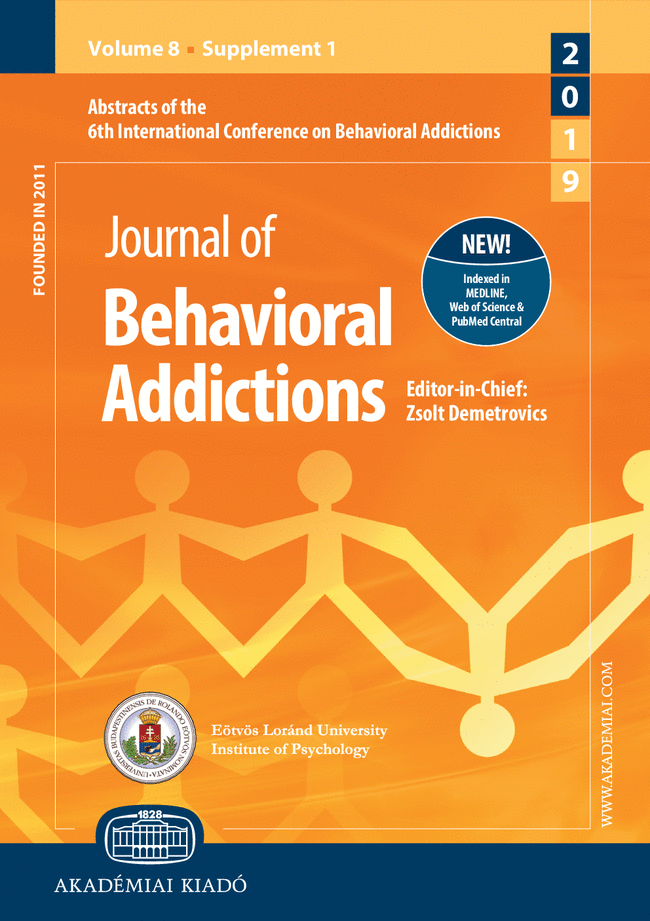Alterations in functional networks during cue-reactivity in Internet gaming disorder
Alterations in functional networks during cue-reactivity in Internet gaming disorder
Author(s): Shan-Shan Ma, Patrick D. Worhunsky, Jiansong Xu, Sharah W. Yip, Nan Zhou, Jin-Tao ZhangSubject(s): Behaviorism
Published by: Akadémiai Kiadó
Keywords: behavioral addiction; cue-reactivity; fMRI; functional brain networks; ICA; Internet gaming disorder
Summary/Abstract: Background. Cue-induced brain reactivity has been suggested to be a fundamental and important mechanism explaining the development, maintenance, and relapse of addiction, including Internet gaming disorder (IGD). Altered activity in addiction-related brain regions has been found during cue-reactivity in IGD using functional magnetic resonance imaging (fMRI), but less is known regarding the alterations of coordinated whole brain activity patterns in IGD. Methods. To investigate the activity of temporally coherent, large-scale functional brain networks (FNs) during cue-reactivity in IGD, independent component analysis was applied to fMRI data from 29 male subjects with IGD and 23 matched healthy controls (HC) performing a cue-reactivity task involving Internet gaming stimuli (i.e., game cues) and general Internet surfing-related stimuli (i.e., control cues). Results. Four FNs were identified that were related to the response to game cues relative to control cues and that showed altered engagement/disengagement in IGD compared with HC. These FNs included temporo-occipital and temporo-insula networks associated with sensory processing, a frontoparietal network involved in memory and executive functioning, and a dorsal-limbic network implicated in reward and motivation processing. Within IGD, game versus control engagement of the temporo-occipital and frontoparietal networks were positively correlated with IGD severity. Similarly, disengagement of temporo-insula network was negatively correlated with higher game-craving. Discussion. These findings are consistent with altered cue-reactivity brain regions reported in substance-related addictions, providing evidence that IGD may represent a type of addiction. The identification of the networks might shed light on the mechanisms of the cue-induced craving and addictive Internet gaming behaviors.
Journal: Journal of Behavioral Addictions
- Issue Year: 8/2019
- Issue No: 2
- Page Range: 277-287
- Page Count: 11
- Language: English

